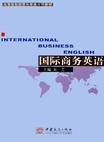国际商务英语
2004-8
中国商务出版社
黄芳
301
254000
《国际商务英语》是适用于普通高高院校国际贸易,工商管理,电子商务。财政金融,外贸英语,涉外文秘等专业的商务英语阅读教材。通过学习有关商务活动的语言材料,学生可以熟悉并掌握当代商务理念和国际商务惯例,了解英语国家的社会和商业文化。具体教学要求为:能读懂中等难度的商务英语文章,理解准确率在75%以上;能够翻译一般性商务材料,词汇要求为认知词汇达到7000至8000个单词,其中熟练掌握约5000个单词。
Unit 1 What is International Business? Text: The Nature of International BusinessUnit 2 Exporting and Importing Procedures Text: Exporting and Importing ProceduresUnit 3 Documents Text: International Trade DocumentationUnit 4 Business Organization and WTO Text: World Trade OrganizationUnit 5 Regulations and Trade Barrier Text: Nontariff Barriers to TradeUnit 6 E-commerce Text: E-commerceUnit 7 Joint Ventures Text: Joint VenturesUnit 8 Intellectual Property Text: Intellectual PropertyUnit 9 Marketing and Sales Text: Marketing Is All Around UsUnit 10 Accounting Text: Accounting --The Language of BusinessUnit 11 Human Resources Management Text: Human Resource ManagementUnit 12 Intemational Convention Text: UN Convention on Contracts for the International Sale of GoodsUnit 13 Public Relations and Advertisement Text: Public RelationsUnit 14 Culture and Communication Text: Recognize Cultural DifferencesUnit 15 Globalization Text: Is Globalization Slowing Down?Unit 16 International Taxation Text: International TaxationKeys to Exercises“商务英语阅读”课程教学大纲参考文献
The same holds true for countries. Paul Samuelson, a well-known United States econonust, gives this example: the United States is relatively more efficient than Europe in producing food (using only one-third of the labor that Europe does)and in producing clothing (using only one-half the labour). Thus, while the United States has an absolute advantage in both forms of production, its effi-ciency in food production is greater. It has a comparative disadvantage in cloth-ing. Consequently, a great deal of clothing is exported from Europe to the United States. To summarize,[1] the theory of comparative advantage states that if each country specializes in products in which it has a comparative advantage (greatest relative efficiency), trade between these countries will be mutually profitable. Comparative advantage has led countries to specialize in particular products and to mass-produce. Sometimes this goes one step further. Italy gained a com-parative advantage over many countries in mass-producing wine. France, self-supporting in wine, presently imports large quantities of Italian wine, which is cheaper. In tum, a large portion of the French wine production is exported. It is generally assumed that international business is beneficial for all partici-ptrrits.[2] However, govemments can often take protectionist measures. For exam-ple, they can impose tariffs and quotas on imported items. A tariff is a tax on im-ported items, computed as a percentage of the import value. An import quota is the maximum quantity of a product allowed into a country during a given period of time. These measures are meant to protect domestic industry so that imported goods will not be sold cheaper than home-produced ones. At the same time, cou-ntries attempt to achieve equilibrium in the balance of payments. Intemational business can also be linuted due to the high cost of transporting bulky or perishable goods. Even if the United States had a comparative advantage over Jordan in producing lampposts, transportation expenses would prevent export-ing them to that country. Similarly, if Holland had a comparative advantage over-Brazil in producing tomatoes, transportation cost would make these perishable goods too expensive to sell. ……

不错不错,几次生意下来,让我对当当已经很有好感了!
很喜欢,物美价廉
书里面有些是和其他页面纸张颜色不一样 不过不影响阅读
re*****
纸张的质量不好,时而纸变得很白